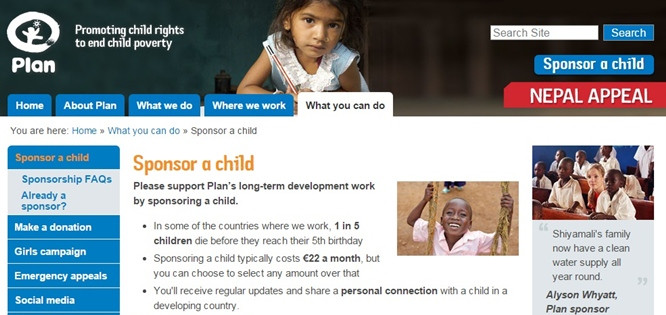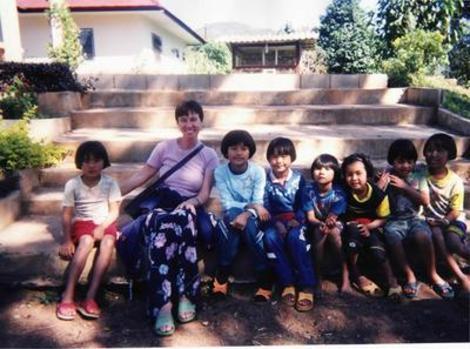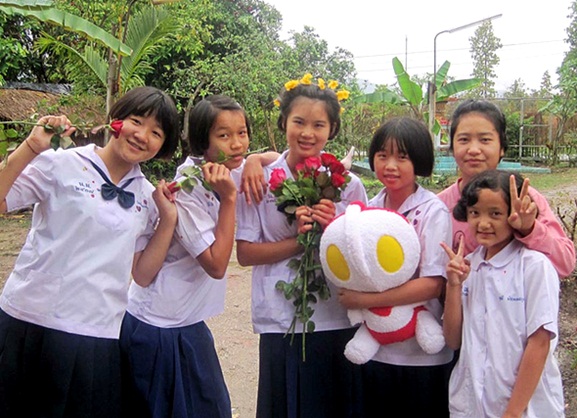
Sponsor a Child Overseas and Watch Your EFL Students Be Fascinated with Geography
The secret to teaching World Geography to kids of almost any age is to make it engaging for them and also something in which they can actively participate. For a wonderful Geography lesson plan for children between the ages of 8 and 16, sponsoring a child in another country through a sponsorship agency is a great way for them to learn about a different country than their own.
When I was teaching in Thailand, I typically had my classes sponsor a child through Plan International because they have kids available for sponsorship in 51 countries. They are not a religious organization and I did not want to choose a sponsorship agency that only gave poor kids help if they converted to Christianity.
Plan International is one of the biggest and best agencies in my opinion, but you could also sponsor a child thru Save the Children, Children International, or any number of other agencies.
Materials:
Approximately $1 a month from each student per month (I recommend collecting $12 at the beginning of the semester so that the project is paid for for the entire year).
1 Class Binder
Computer and internet access.
Blank paper and colored pencils.
Each student will need a binder to hold all their copies of the paperwork for the project.
Introduction – Day One:
Write down on the blackboard the 51 countries that Plan International has sponsored children available in. Go around the classroom and have the kids vote for the country they are most interested in learning about. If, at the end of the voting, you have a tie for two or more countries, then have the kids vote for these countries until you have one country that is an outright winner.
Explain to the class that they are going to sponsor a child in another country for one year. Tell them what sponsorship entails, that it requires a small payment per class member every month (typically around $1 per student per month depending on how many students are in the class), but that the child the class sponsors will get free health care, nutritious food, an education, clean water, clothing and many other benefits.
Activity – Day One:
Split the class up into groups of 3 or 4. Then assign each group to a computer. Give them the URL for the Plan International website and tell them to look for a child they would like to sponsor. Each group has 15 minutes to find a child they are interested in that is in the country the class has agreed upon.
At the end of 15 minutes, each group must give a 30 second presentation about why they like that particular child. Then the class votes on the child they would like to sponsor. Typically it takes two or three rounds of voting before a decision is made.
Once a decision has been agreed upon by the whole class, make sure you go back to the Plan International website and actually sign up to sponsor the child chosen. Plan will then send you a package of information in the mail about the child.
It includes photographs of him or her and their family, information about their area, their house, the parents’ income, the child’s health and a whole lot of other issues. It will also include in depth details about the child’s country. The package usually takes a week to 10 days to arrive.

Introduction – Day Two:
Once the information package about the child has arrived, make photocopies of the pertinent information for each student and hand them out. Talk about the sponsored child, hand the photographs around the class, and ask the students what they think.
Talk about the family and their income and the country they live in. Answer any questions the students might have about CCF, the country the child is in, or the child themselves. Also make photo copies of the information and put into a class binder along with the photos of the child and his/her family.
Activity – Day Two to Day Three:
Hand out paper to each student and ask them to write an introductory letter to the sponsored child telling a little about themselves – who they are, how old they are, what they like to do, about their family etc. They can also draw pictures on the letter. For younger kids, I would have them write a couple of sentences and then draw a picture about themselves and their family.
Once the letters have been finished, collect them up, make 2 photocopies of each letter (one to give to the student and one to put in a class binder about the sponsored child), then send the letters off to Plan to be sent to the sponsored child.
Activity – Day Four Onwards (A):
Start the class on researching about the sponsored child’s country either in the library or on the internet. Every week for homework, each student is required to write a one page essay about the country the sponsored child lives in.
They should also collect photographs from the internet or from magazines about the country. Copies of everything should be put in the class binder.
Activity – Day Four Onwards (B):
As you begin to receive letters back from the sponsored child, you and your class will learn more and more about them and their culture. Every month, have your entire class write letters to the child. Also encourage them to bring in photographs of themselves and their families to send to the sponsored child, so that the sponsored child can see who they are.
Conclusion:
This activity can be continued on throughout the whole school year. I recommend you start it right at the beginning of the first term, so that the class has plenty of time to write letters and to get to know the sponsored child.
I have done this project with four classes now. All of them were EFL/ESL classes in Thailand who had limited English skills, yet they all loved it.
I also found they were far more interested in Geography when they realized they actually knew somebody in the country they were learning about. A couple of kids even went off and sponsored other children with their own Mother and Father as sponsors.
The class binder is also a great thing to have with all the information about the sponsored child, the letters the class has written and the research they have done. I do a display of the binder and some of the letters and photos at the end of every semester for the whole school to look at.
The kids outside my class were suddenly clamoring for their teacher to let them do this project too. It also works on all age groups and all levels of learning.
Not only is this an awesome way for your students to learn about the geography and social issues of another country, but it also teaches them about giving to others.
You will find many more free EFL lesson plans here.



